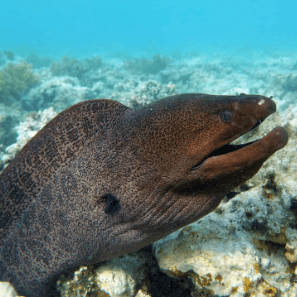
The marine world is a fascinating one -- but it can also be a dangerous one. Venomous fishes, such as stingrays, catfish and more can be found in global waters and are some of the most hazardous sea creatures. In this blog post, we'll provide a practical guide to recognizing and handling venomous fishing safely and correctly, so that you can avoid harm and remain on the lookout.
First Aid Treatment
If you have been stung or bitten by a venomous fish, do not worry. Keep calm and follow the following steps. First aid treatment consists of treating the affected area immediately to reduce the effects of the venom. In the case of venomous fish, it typically involves removing the spines embedded in the skin and cleaning the injury with soap and water, or applying an antiseptic to the wound to reduce inflammation. In the case of a severe reaction, it's important to seek medical attention as soon as possible.
Safety Measures
Safety measures should always be taken before attempting to identify and handle venomous fishes. Make sure there is a designated toilet or any other facility that you can wash your hands. Additionally, it is wise to familiarize yourself with the fish that inhabit your area before going out in the water. This will make you better equipped to distinguish venomous species from harmless ones.
Handling Guidelines
When handling venomous fishes, there are a few procedures that must be followed. Firstly, all handling should be done using gloves, to reduce the risk of exposing skin to venomous spines. If there is no gloves available at theat point in time, always use pliers instead when handling the fish. Secondly, it is important to pick up the fish firmly and always move your hand from the head downward to prevent getting poked from the spine/spikes.
Identifying Venomous Fishes
Identifying venomous fish can be challenging, considering that many species may resemble non-venomous ones. The difference lies in physical attributes such as their colouring, scales, and fins. For example, lionfish tend to have spines and stripes whereas regular fish usually do not. Additionally, venomous fish may also have toxins which can be determined through a chemical analysis.
Identifying the dangerous fishes that can be found in Singapore waters
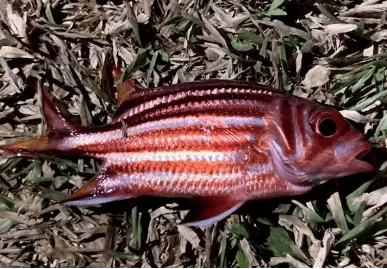
Image of a redcoat squirrelfish
Credit : Jives fishing
Redcoat SquirrelfishSargocentron rubrum
No local name
Fish description : Big eyes that is disproportionate its head size, usually striking red in colour, has small and white spikes almost everywhere especially the gill cover
Habitat : Reefs and rocky area
Max size : 32cm
Diet : Small /cut prawns
Time of the day : Usually caught at night
The venom cause a brief stinging pain that can last for a few hours.
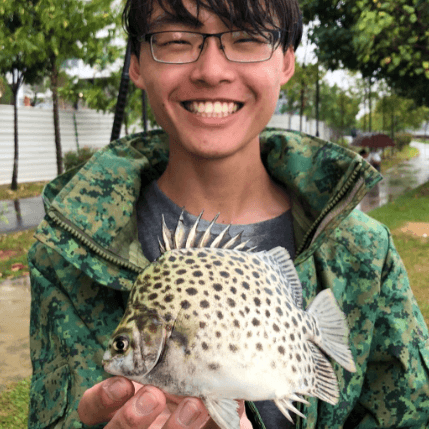
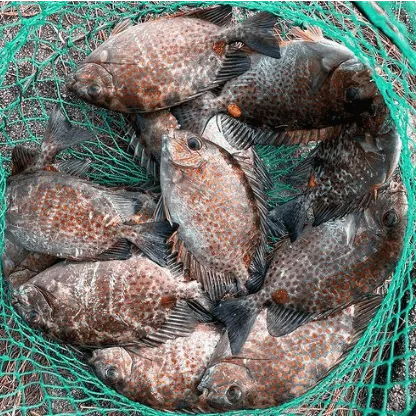
Spotted Scat and Rabbitfish
Fish description : Leathery skin, dark brown or black spots, rear dorsal fin is yellowish in colour, very large and prominent spine on the dorsal fin.
Habitat : Seawalls and mangroves
Size : 35cm
Diet : Eats almost anything (not fussy eaters)
Time of the day : Usually caught at night
The venom cause a sharp penetrating pain that can last for days. The venom can also cause muscle spasm or temporary paralysis.
Credits : Xue Shen (Jives fishing)
Fish description : Small mouth, rabbit like snout, has spots all over its body
Habitat : Breakwater, jetty, seawalls, and certain types of seagrass
Size : 8-15cm (White spotted) /15-40cm (Orange spotted)
Diet : Seaweed, bread (Herbivore /vegetarian fish)
Time of the day : Active day and night
The venom cause a sharp pain that can last for a few hours.
Credit : AJVM
Catfishes
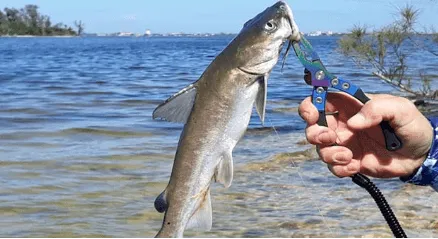
Before we dive into catfishes, there is some basic knowledge that you must know. Firstly, ALL the catfishes we will be cover has 3 spines on their fin, 1 on the dorsal spine and 2 on the pectoral spine on the pectoral fin (the side fin). So total 1 on the top and 2 at the side. Secondly, THESE SPINES ARE ALL VERY HARD THICK AND VENOMOUS.
Mozambique sea catfish
Local name : Jahan, Ah Seng
Fish description : Leathery skin, dark brown or black spots, rear dorsal fin is yellowish in colour, very large and prominent spine on the dorsal fin.
Habitat : Seawalls and mangroves
Size : 35cm
Diet : Eats almost anything (not fussy eaters)
Time of the day : Usually caught at night

In summary, the safety of both the person and the fish is of paramount importance when dealing with venomous species. This post provides a practical guide to safely identifying and dealing with these creatures by covering topics such as recognizing the differences between venomous and other species, first aid treatment, handling guidelines, and safety measures. With this knowledge, the ocean can remain a safe and fascinating environment for everyone to explore.
